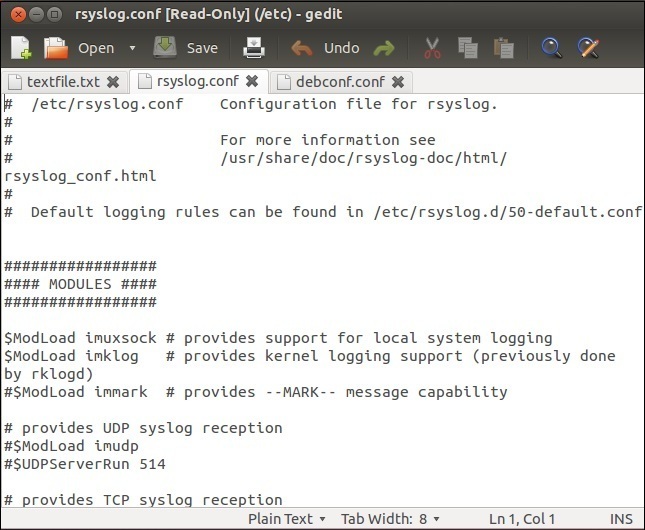
Chromium stable repository was enabled by default very light theme and default artwork fewer default web applications in the menu it shipped with GWoffice and GIMP 2.8 was added to the Peppermint repository. On July 23, 2012, Peppermint Three was released.
Ubuntu install gedit 64 Bit#
It was also the first edition of Peppermint to be available in both 32 and 64 bit versions. Combining aspects from the two previous editions, it packaged Chromium as its default browser alongside the Ice application for creating Site Specific Browsers.
Ubuntu install gedit code#
Alpha builds using the Lubuntu 10.04 code base started in March 2010. There was quite a bit of experimentation with KDE, E17, Adobe Air, and several different code bases during January and February 2010.


Pre-alpha development builds consisted of a wide array of potential directions before the decision to fork Lubuntu was made. It was originally designed to be a social media-centric distribution.

Peppermint OS was initially conceived at the Black Rose Pub in Hendersonville, North Carolina, USA, during a night of drinking and discussion about the future of desktop Linux. Peppermint has consistently released updates on a decent cadence since at least 2010, when it was first released. While Linux Mint is known for its Cinnamon desktop, Peppermint uses a default desktop that is a hybrid based mainly on selected components from LXDE and XFCE that is significantly more lightweight. They felt that the concept was a "spicier" version of Mint, so the name Peppermint was a natural fit. The developers originally wanted to make use of configuration and utilities sourced from Linux Mint coupled with an environment that was less demanding on resources and more focused on web integration. Peppermint OS ships with mintInstall, Synaptic, and GDebi to facilitate this. Peppermint is built from Ubuntu and supports whatever Ubuntu supports. Like any other Linux distribution, it allows installing packages like LibreOffice, GIMP, VLC, Skype, etc. As with any Ubuntu based OS's, applications can be installed natively from Ubuntu compatible repositories, allowing one to run cloud-based applications alongside desktop software. Peppermint OS is a project where you can marry the cloud to the desktop. Support for Firefox (alongside Chromium and Chrome web browsers) was added to the custom Ice application in the fall of 2015, allowing the creation of SSBs in a web browser window.

Instead of opening a browser and then visiting an application site, a dedicated browser window is integrated into the system for a specific application. In Peppermint OS, the open-source Firefox browser is used to enable a site-specific browser (SSB) for cloud applications. In place of traditionally native applications for common tasks (word processing, image editing), it ships with the custom Ice application, which allows users to create site-specific browsers (SSB's). What originally made it unique was its approach to creating a hybrid desktop that integrated both cloud and local applications. Peppermint OS ships with few native applications and a traditional desktop interface. It aims to provide a familiar environment for newcomers to Linux, which requires relatively low hardware resources to run. Peppermint OS is a Linux distribution based on Debian and Devuan Stable, and formerly based on Ubuntu.


 0 kommentar(er)
0 kommentar(er)
